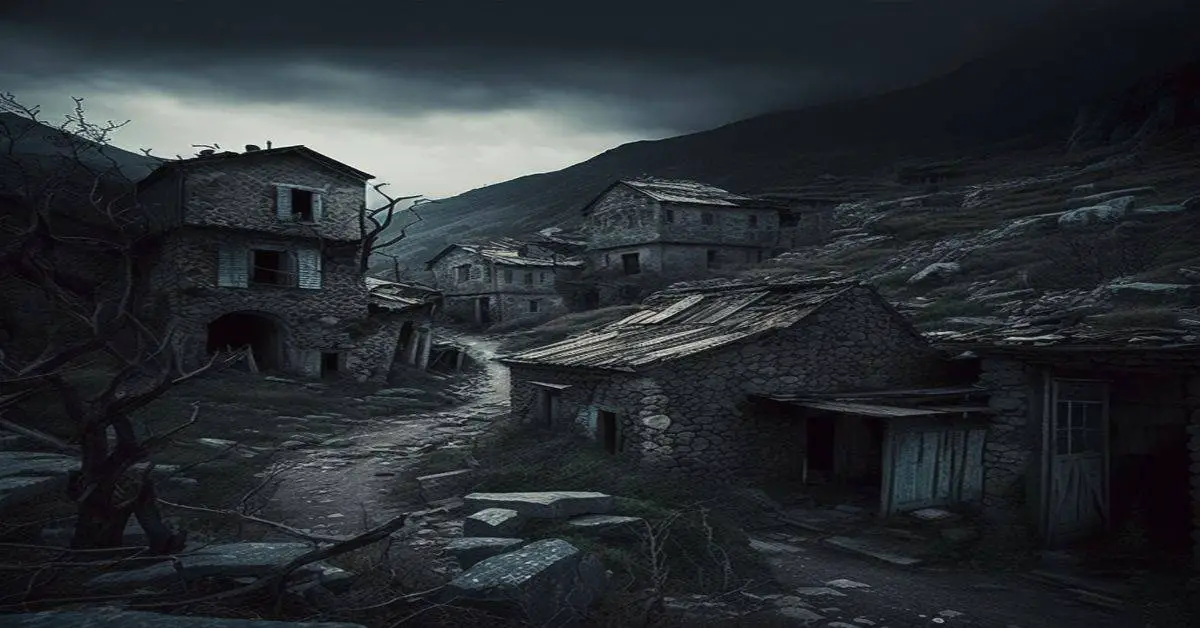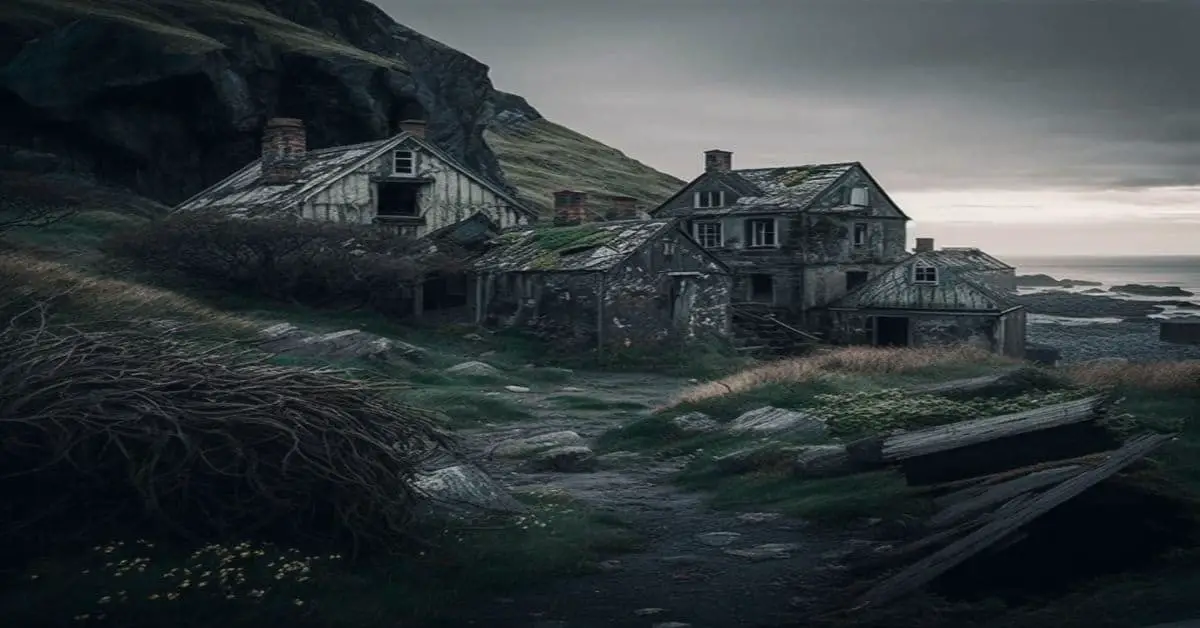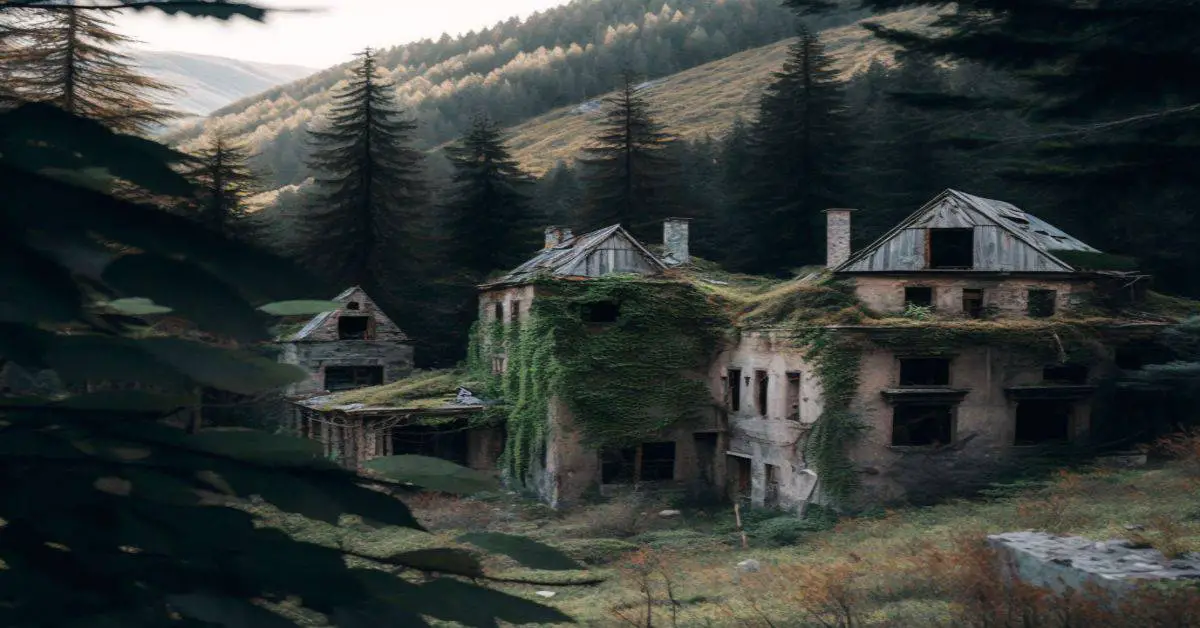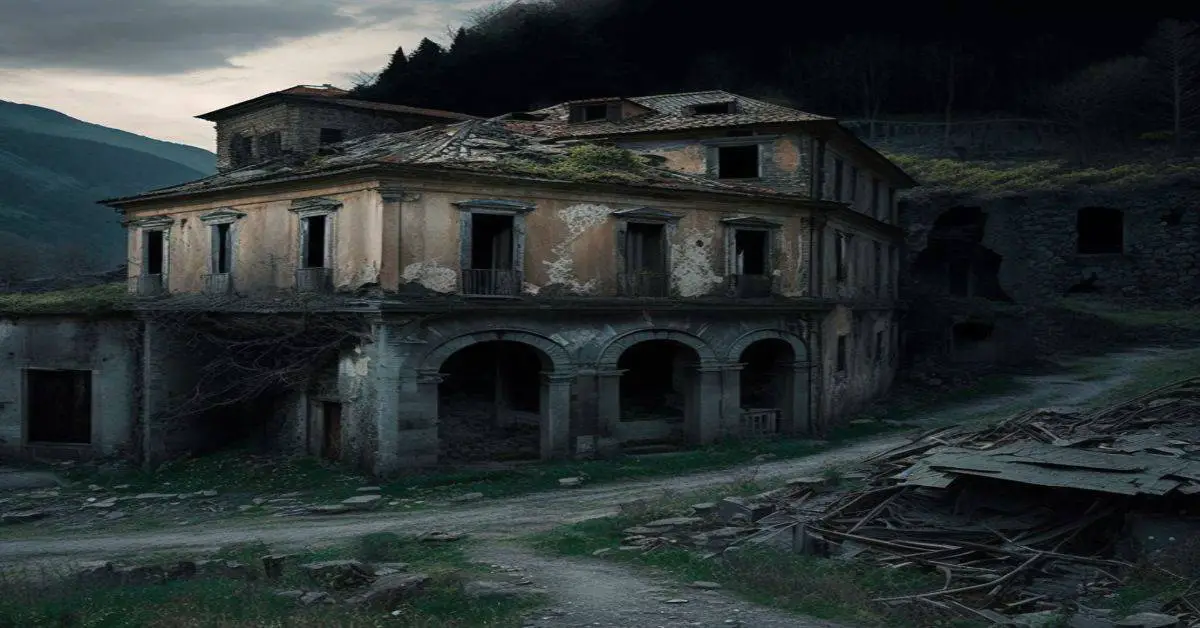Oregon State: Oregon Ghost towns
Steam donkeys were once commonplace throughout Oregon. They hauled loggers into remote forest areas and pulled lumber down rivers to mills along the Columbia River Gorge. These days, they’re just another piece of history left behind in the state.
Mining was once a major industry in Oregon. Communities built around mines thrived until they were either abandoned or destroyed due to mine accidents, environmental damage, or lack of profitability. Many mining towns still exist today, but many have been reduced to ghost towns. Others, like Gold Hill, California, and Leadville, Colorado, grew into thriving tourist destinations.
Towns whose names evoke prosperity include Baker City, Idaho; Bend, Oregon; and Independence, Missouri. Other towns fell victim to floods, fires, earthquakes, or economic downturns. Today, only a few remain.
One example is the town of Musselshell, Montana, established in 1882 at the confluence of the Musselshell River and Milk Creek. Its population peaked at 2,500 residents before its demise in 1908 after discovering gold near Helena, Montana. Nowadays, the site serves as a national park and wildlife refuge.
Oregon has designated over 200 cities as “ghost towns” since 1864. These include communities like Tiller, OR, which was founded in 1862 but never grew beyond a population of 19 residents. To qualify, cities must meet at least two criteria listed above. They cannot contain enough permanent residents to elect a mayor and council members. And they must possess historical significance.
According to an old-timer from the declining town of Spray, Oregon, “If I had my way, there would never be another wheel made.”
“They’re just like any other city except that very few live there.”
Booming Town & Booming Businesses
Oregon has many ghost towns – abandoned after running out of money. Many boomtowns existed during the Gold Rush era, but these communities often failed due to poor management and a lack of infrastructure. Today, there are still plenty of ghost towns scattered across the state. These forgotten settlements allow visitors to explore history through buildings left behind.
In 1871, Portland was incorporated into Multnomah County, becoming its city. During the 1880s, lumber mills began popping up throughout the county. By 1890, over 200 sawmills were operating within the region, employing thousands of men and women.
Many of these mills had been established by Chinese immigrants, but they quickly spread across ethnic lines. In fact, during the height of logging operations, almost half of the population of Multnomah County was foreign-born.
Many towns boomed during the lumber era, but many busted after the timber was gone. Towns like Grass Valley, California, depended entirely upon logging operations until the early 1900s. After the trees ran out, the population plummeted, and the economy collapsed. Today, there are few reminders of those days except for the remains of buildings dating back to the late 1800s.
Ghost Town Hunting
In Oregon, there are over 200 ghost towns scattered throughout the state. Many were once thriving communities before they succumbed to economic hardship, disease, fires, floods, earthquakes, and other calamities. Today these abandoned settlements offer visitors a chance to explore history in its rawest form.
While many ghost town tours are guided, independent travelers should exercise caution. There are no fences around old mining sites, and trespassers are often exposed to danger. Most ghost towns are located along roadsides and trails, so stick to those areas. Always check with local authorities before venturing off-trail. And remember: don’t leave valuables unattended.
Ghost towns can be challenging to spot. They’re sometimes just a pile of rubble, but they can tell us a lot about history. For example, many abandoned mine shafts were used to transport the ore. These old tunnels are usually marked with signs at Ghost Town National Historical Park near Leadville, Colorado.
And there are many places around America where you’ll see those same marks. That tells us something important about American history – coal was mined here long before oil was discovered in Pennsylvania. Coal miners had to travel through miles of dark underground passages to reach their jobs. After working down below, they would emerge into bright daylight aboveground.
Then they’d haul tons of rock again using buckets and pulleys. At times, the only light came from candles inside the tunnel. Those tunnels exist today, though they’ve been closed off since the 1970s. Nowadays, visitors can explore the remains of the past. There are no ghosts here, but the place sure feels haunted.
Oregon Mining
Gold was discovered at Sumpter Creek in 1852. That discovery led to hundreds of prospectors heading west across Oregon Territory. They came from Europe, Asia, Africa, Australia, New Zealand, South America, Canada, and Mexico and brought their families along, too.
The gold fever spread like wildfire through the territory, and many new settlements sprang up overnight. Most didn’t last long, though. By 1860, fewer than 200 permanent residents were left in the state. Today, only four ghost towns remain Lost Lake City, Rogue River, Silver Falls State Park, and Tiller.
This community has been searching for precious metals since ancient times. Mining companies destroy land wherever they extract minerals. These communities have suffered dramatically due to mining operations. Rivers become polluted and destroyed. Animals cannot live near these areas anymore. People suffer health issues due to toxic air pollution caused by heavy metal contamination.
In 1848, gold struck near present-day Bend, Oregon. Soon after, prospectors began panning rivers and digging shafts throughout southwest Oregon. By the late 1800s, thousands of men were working in these new fields. Most came from China, but many were American immigrants looking for work.
They lived in “company towns” camps – large settlements built around a single mine owned by a corporation. These companies paid little attention to safety standards and focused on profit margins.
Between 1865 and 1890, hundreds died because of unsafe equipment and dangerous working conditions. Gold production peaked during the 1870s and dropped dramatically following the Panic of 1893. Mining activity continued sporadically until the early 1900s.
Chinese Miners in Oregon
In 1848, Chinese laborers began arriving in California seeking work in the Gold Rush. Many were employed at the Sutter Mill near Sacramento but soon moved into the mountains looking for gold. By 1860 approximately 40,000 Chinese were living in the state.
However, they lived mostly along the coast and did not form any towns until after 1900. Most of these early communities were in San Francisco Bay Area counties like Alameda, Contra Costa, Marin, Napa, Santa Clara, Solano, Sonoma, and Yolo.
These places attracted new waves of migrants during World War II, Korean war veterans, Vietnam-era draft dodgers, and illegal aliens. Today, Asians comprise only 4% of Californians; nevertheless, Asian Americans still represent the most significant ethnic minority in the Golden State.
Most of these immigrant miners came from mining regions in China’s Guangdong Province. There, Chinese mining companies trained skilled workers who then sailed to America. Many laborers were educated and came from wealthy families in southern China.
They mostly worked for companies that owned stores, casinos, laundry services, restaurants, and hotel rooms. Mining company owners usually didn’t pay salaries like regular employers; instead, they paid a share of the profit based on a miner’s contribution and experience. Miner earnings were typically sent back to China.
Bourne, Oregon
Bourne began life as a mining camp but eventually grew into a city. Named after its founder, Jonathan Bourne, the community took advantage of nearby mineral deposits, including gold, lead, zinc, copper, iron ore, coal, limestone, clay, marble, salt, sulfur, gypsum, potash, oil shale, petroleum gas, asphalt, sandstone, gravel, and mica.
These minerals were used to build homes, schools, churches, businesses, hotels, banks, hospitals, shops, warehouses, factories, railroads, utilities, and much more. Many of these buildings still stand today and serve as reminders of the past glory days of the city.
F. Wallace White was born into poverty in 1852. He left school at age 13 to work in the nearby gold mine. His dream was to strike it rich there, but the mines dried up before he could do anything about it. So instead, he started printing a weekly newspaper called the Daily Mining Journal.
One of its goals was to convince readers that they should move to Bourne, Massachusetts, to find jobs in the booming textile industry. To accomplish this goal, White printed fake news stories about the city, including claims that it was full of crime and disease.
Wallace F. White was a con who duped thousands of unsuspecting Americans into buying shares in phony mining companies. His scheme worked until he ran short of cash. Then he took advantage of his victims’ desperation and used their life savings to pay off debts. After being convicted of fraud, White went to prison for ten years.
Wallace White had been running scams since 1892. By 1901, he’d already conned $3 million from unsuspecting investors. Then, he moved to Montana, where he ran a new scam called “the White Water Scheme.” His plan? To convince folks, they could strike it rich by mining near rivers full of water. Unfortunately for everyone involved, there wasn’t any gold nearby.
So, after bilking thousands of people out of their life savings, White skipped town. Nowadays, white-collar criminals like White aren’t usually violent; instead, they’re often shysters who prey on trusting individuals through deceit.
Bourne today is nothing but a ghost town. Gold mining is no longer profitable enough to support much of the population, and many homes were destroyed during the fire. Today only a handful of houses and shops remain. Much of Bourne was lost forever after being swallowed by the surrounding forests.
Buncom, Oregon
Due to its rugged landscape and sparse population, Buncombe County has been called “the last frontier” in Oregon. However, a few hundred years ago, a thriving community was here. That settlement was named after the Native American tribe that lived in the area. Today, only remnants remain of those early days. There is still a historical marker near the site of the original town.
In 1890, the Buncombe County Board of Commissioners passed an ordinance establishing the Buncom Days celebration. Each year since, the community has celebrated the occasion at its own pace. During the festivities, there is plenty of entertainment, including musical performances, dancing, arts & crafts shows, parades, children’s games, fireworks displays, and much more.
Visitors enjoy the opportunity to tour historic homes, visit museums, shop unique boutiques, dine at fine restaurants, and experience the many attractions available throughout the county.
Cornucopia, Oregon
Cornucopia is located near the foothills of the Cascade Mountains in eastern Oregon. Named after a mythical horned creature said to bring prosperity, the community grew rapidly due to its proximity to nearby mines. By 1900, approximately 730 inhabitants were living here. Today, only a handful remain.
In the late 1800s, the town was isolated due to its location deep within the mountains. There wasn’t much infrastructure there at the time, but the discovery of gold changed everything. Mining companies came into the area and built railroads connecting the townsite to larger cities like San Francisco. By the 1930s, the town boasted 20 stamp mills, allowing miners to process ore quickly and efficiently.
In 1928, Cornucopia had a population of only ten residents. That number would drop below five before long. The Great Depression hit hard, but the community survived thanks to its rich mineral deposits. Gold extraction peaked during WWII, producing millions of dollars worth of precious metal each year.
However, demand waned after the war ended. Production declined sharply until the 1950s, leaving many miners unemployed. Today, Cornucopia remains a ghost town abandoned since the early 1970s.
Golden, Oregon
Gold was discovered here in 1848 by prospectors looking for rich veins of ore. They quickly realized there wasn’t much gold in these deposits but found large quantities of silver. These men soon moved westward, seeking better prospects.
By 1850, the town had grown into a bustling mining community. After several decades of hard labor, the mine owners decided to sell off the property to raise money to finance new ventures elsewhere. Today, only remnants remain of the once-thriving settlement of Gold Hill.
Gold mining was once a major industry along the Colorado River. From 1872 until the early 1900s, thousands of men worked hard at panning for gold. They often had little success but still made enough money to live comfortably. Many towns sprang up around the mines during those years. One of the largest was called Golden. Today there are only ruins left behind by the boomtown days.
Unlike other mining towns, Golden didn’t see much economic activity until the early 20th century. That changed quickly once gold was discovered at nearby Grave Creek. By 1910, over 500 miners were working the creek. Many lived in makeshift shacks along the stream’s banks, leaving behind only ruins today.
Golden was once a bustling gold mining town near present-day Goldfield, Nevada. Its population peaked at around 2,500 residents during the late 1800s but dwindled over time due to competition from nearby mines like those operated by John D. Ryan & Company.
Today only a handful of original buildings remain standing in Golden. These include several historic homes, including the 1887 Stoddard House Hotel, the 1880s Town Hall building, and the 1906 Masonic Temple.
Greenhorn, Oregon
Greenhorn has been called “the ghost town of Southern Oregon” due to its remote location and lack of human presence. Unlike many other old mining towns, Greenhorn still exists today. Its buildings remain standing, although they are now used mostly for storage.
In October of 2013, the citizens of Greenhorn were startled to discover that the historic jail they’d been using since 1911 was missing. No one seemed to remember exactly when it went missing, but there were plenty of theories. One theory suggested that someone stole the building and brought it into the mountains.
Another said a tornado took it off a truck and deposited it elsewhere. However, none of these theories made much sense. For starters, the only thing that would move a large wooden building like the Greenhorn jail would be a bulldozer. And besides, nobody saw anything flying around during the storm. So after a few months, everyone just gave up trying to figure it out.
Then, in March 2014, a local man named Daniel Smith started poking around the abandoned property. He noticed something strange about the land surrounding the jail. There appeared to be a series of tunnels underneath it. Curious, he decided to investigate further.
He uncovered a secret tunnel system connecting several buildings throughout the canyon. He found hundreds of thousands of dollars worth of gold coins in those rooms. After finding the treasure trove, Mr. Smith contacted authorities and told them everything he knew.
They didn’t believe him until they dug through the walls themselves. Once inside, they found evidence suggesting that a gang ran the whole operation called, the Gold Rush Gang. Eventually, they arrested eight gang members and charged them with multiple counts of grand theft.
All eight men pleaded guilty and received sentences ranging from probation to five years behind bars. Today, the Greenhorn jail sits empty once again, waiting to see if anyone ever finds the rest of the hidden treasures left behind by the Gold Rush Gang.
Jacksonville, Oregon
Jacksonville has been compared to a zombie movie due to its history of abandonment and decay. However, Jacksonville was once a thriving community before suffering devastating floods in 1892 and 1937. After these events, the residents left the city behind. Nowadays, only a few buildings remain standing in downtown Jacksonville.
Jacksonville has been called “the City Beautiful” since its founding in 1850. Its tree-lined streets, beautiful parks, historic buildings, and bustling downtown district attract visitors year-round. During the winter, locals flock to the shops along Main Street to browse through unique gifts made by local artisans.
Residents enjoy hiking, biking, fishing, golfing, and exploring nature trails nearby Lake George during warmer seasons. There is no shortage of family-friendly attractions throughout the region, including museums, zoos, aquariums, botanical gardens, historical sites, and amusement parks.
Oregon Trail pioneers brought their families westward along the Oregon Trail, following the path blazed by Lewis & Clark. They settled at Fort Clatsop near Astoria but didn’t stay there long. Their trail led them across the mountains into California, but after 1846, settlers began moving north again.
By 1850, thousands had made the trek to Oregon, settling in the Willamette Valley and founding towns like Salem, Corvallis, Eugene, Bend, Medford, Ashland, Grants Pass, Roseburg, La Grande, Independence, Klamath Falls, John Day, Pendleton, Baker City, Albany, Madras, Monmouth, Springfield, Forest Grove, Dallas, Sandy, Central Point, Newberg, Hillsboro, Lake Oswego, Milwaukie, Beaverton, West Linn, Tigard, Tualatin, Sherwood, Gladstone, Wood Village, Wilsonville, Gresham, Fairview, North Plains, South River Estates, and Rock Creek Park.
In 1872, Jacksonville was hit hard by the Panic of ’73. Many residents lost money in land speculation schemes. Others were forced into bankruptcy. By 1880, Jacksonville had fallen behind many towns along the route of the O&C Railway.
After the railway bypassed the city, local leaders decided to invest in the future instead of holding onto past glory. Rather than buying property rights or donating funds towards construction costs, the community purchased shares of the company.
On April 15th, 1886, the O&CRR opened its final section through Jacksonville. That same year, Jacksonville celebrated its centennial anniversary. Today, there is still no trace of the original depot site.
Jacksonville has grown into a major tourist destination. Today, visitors flock here yearly to enjoy its beautiful scenery, rich history, and vibrant cultural scene. Visitors find themselves drawn to downtown Jacksonville, which offers many restaurants, shops, galleries, and festivals throughout the year.
From May through September, the annual Music Festival brings thousands of tourists to the streets of downtown to experience live performances and food vendors. Throughout the rest of the year, the Museum of Contemporary Art welcomes art lovers with rotating exhibits showcasing local artists.
Medford, Oregon
Medford, Oregon, has been called “the New York City of the West Coast” thanks to its unique mix of history, culture, and architecture. And now, visitors can experience these treasures at no cost. For decades, residents worked hard to preserve the city’s rich heritage.
Today, more than 80 historical sites are open to the public free of charge. Many of those places were once thriving businesses; today, they serve as museums, galleries, restaurants, shops, and community centers. Today, tourists flock here to see the Old Town District, including the 1885 Opera House, the 1886 Courthouse Square Historic District, and the 1889 Firehouse Museum.
Visitors can explore the past through exhibits, tours, lectures, festivals, performances, and workshops. They can learn about local history, meet fascinating characters, enjoy live music, shop for antiques, and sample delicious food. There’s something for everyone – kids included.



